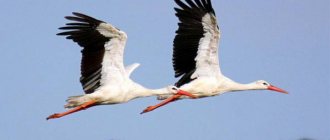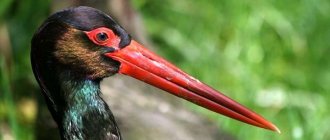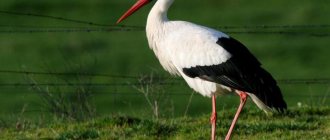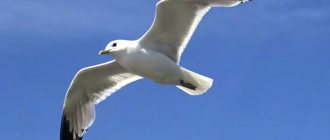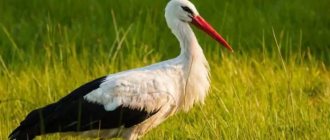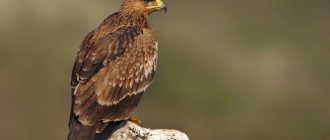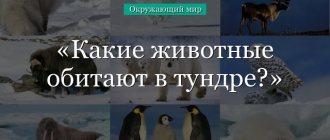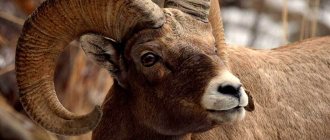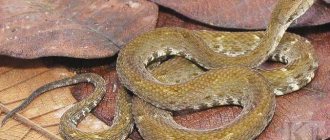When do geese fly to warmer climes?
At the end of October - beginning of November, on websites, among bird watchers, there was only talk about the migration of wild geese, and the wonderful photographs that illustrate this. In the sky, wild geese can often be seen flying in a wedge.
Interesting materials:
What's happening in the USA January 2022? What happens when you delete a shortcut? What happened to Galkin Maxim? What happened to the Little Mermaid? What happened in the Minsk metro? What is made from ethane? What is made from peas? What do they check with a narcologist? What loosens the soil? What develops in the Ovule?
Where do white storks winter?
How they live, build a nest.. and so on..
Latin name – Ciconia ciconia English name – White stork Order – Ciconiiformes Family – Storks (Ciconiidae) Genus – Storks (Ciconia) The white stork is the most famous and widespread species of the family ; in many parts of its range the species has become synanthropic, i.e. has adapted well to life next to a person.
According to its international status, the white stork is one of the species whose position in nature causes the least concern. However, its abundance varies in different parts of its vast range. In the western parts, the number of white storks is declining, despite people's favorable attitude towards these birds. This is probably due to the intensification of agriculture, which reduces the food supply of birds, as well as their poisoning due to the intensive use of pesticides and fertilizers. In Russia, on the contrary, the number of storks is increasing as a result of a decrease in the use of agricultural areas. The global white stork population numbers 150,000 breeding pairs, and about one third of them live in Russia, Belarus and Ukraine. As for regional protection, the white stork is included in the Red Book of Kazakhstan. There are many legends and beliefs about the white stork among different nations. Since ancient times, it has been considered a symbol of longevity and marital fidelity. Parents explained to their children that it is storks that bring children to people. The Slavs and Baltic peoples considered the stork a symbol of prosperity and happiness. If a stork's nest appeared on the hut, consent, health and a good harvest awaited the owners. People believed that storks settle only with good and hardworking people, and avoid the homes of evil and lazy people. In fairy tales, the stork is always a positive hero, saving his owners from fires, snakes and other misfortunes. The Poles believed that storks, circling in the sky, dispersed thunderclouds. In Germany, in honor of the spring arrival of storks, festivities, festive processions were held, and bells were rung. In Ancient Greece, people, seeing the first stork in the spring, knelt down. In ancient Rome, there was a “stork law”, according to which adult children were obliged to take care of elderly parents; It was believed that storks feed their parents. In Morocco, it was believed that storks are people who fly from a distant island in the form of birds, and then again acquire human form. In Moldova, the stork is a symbol of viticulture. There is also a beautiful legend about this: storks in their beaks brought bunches of grapes to the besieged soldiers and saved them. The Turks believed that the stork's nest was a talisman against lightning and fires. Armenians considered storks to be sacred birds that protected fields and brought warmth. In Belarus, the white stork is one of the national symbols. The image of storks is in the coats of arms of many European cities. White storks easily make contact with humans, and they can often be seen in peasant yards, walking with poultry. Distribution and habitats
The nesting range of the white stork is very extensive: the Iberian Peninsula, Central, Eastern and South-Eastern Europe, North Africa, Western Asia and Transcaucasia, the south-eastern regions of Central Asia.
In Russia, the range has recently expanded to the east and northeast, and white storks are regularly found in Karelia and the Middle Volga region. White storks winter in tropical Africa and India, and some birds from Central Europe fly to Asian wintering grounds.
White storks are inhabitants of low-lying meadows and wetlands; often settle near human habitation. The white stork is a fairly large bird: its length is 102 cm, its height is more than 1 m, and its weight is about 4 kg. The plumage is white, the flight feathers are black. In a standing bird, the entire back part of the body appears black, which is reflected in the Ukrainian name of the bird - Chernoguz. The feathers of the lower part of the neck are elongated and ruffled. The beak and legs are red, the throat pouch, frenulum and iris are black. Lifestyle and social behavior
White storks are migratory birds. The bulk of the European population winters in tropical Africa, the rest in India. Young birds fly to winter on their own, separately from adults, usually at the end of August. Migration of adults occurs in September-October. Immature birds usually remain in their wintering areas for the next summer.
White storks fly very well and, although they flap their wings smoothly and rarely, they fly quite quickly. In flight, they keep their neck stretched forward and their legs back. Storks can soar in the air for a long time, almost without moving their wings. Nutrition and feeding behavior
The food spectrum of white storks is very diverse and variable due to the location of this population.
Their main food is small vertebrates and various invertebrate animals. The favorite food of European storks are frogs, toads, snakes (including poisonous vipers), as well as large grasshoppers and locusts. However, white storks willingly eat earthworms, various beetles, small fish (including dead ones), lizards, small rodents, chicks and bird eggs. Thus, the “peace-loving kind” stork is a real predator. Living in villages, storks deftly catch chicks and ducklings that have become separated from their mothers. During wintering, storks often feed on locusts. Looking for food, storks slowly walk on land or water, and when they see prey, they quickly and deftly grab it. Vocalization
White storks do not have a voice in the usual sense of the word.
They communicate with each other by clicking their beaks, which completely replaces vocal communication for them. At the same time, storks strongly throw back their heads and retract their tongues. The resulting large, resonating oral cavity amplifies the sound, so that the cracking of storks’ beaks can be heard over a long distance. White stork chicks make sounds reminiscent of a cat's meow. Reproduction, parental behavior and raising offspring
Belarusian storks winter in South Africa
In 2005, the Sixth International White Stork Census was completed, taking place under the patronage of BirdLife International in all countries of Europe, Asia and Africa where this bird lives.
According to preliminary census results, 18 thousand pairs of white storks nest in Belarus. Ten years ago there were about 13 thousand pairs of these birds in our country.
— This is not due to an increase in the number of white storks, but to an improvement in the quality of its recording
, says
Irina Samusenko,
.
— Using the old method, we undercounted about 40% of storks. This time, with the help of volunteers who entered the results of their observations of the white stork into special questionnaires, we were able to obtain more objective data.
Description and features
These feathered creatures have always amazed those around them with their amazing grace: a long flexible neck, impressive, thin legs that lift them high above the ground, a meter or more in height (although females are slightly smaller than their males).
Stork is a bird with a conical shape, pointed, long and straight beak. The feather outfit of such winged creatures is not full of bright colors; it is white with black additions. True, in some species the black color predominates over the white areas.
The wings are impressive in size, with a span of about two meters. The head and majestic neck have interesting - naked, completely featherless areas, covered only by skin of red, in some cases yellow and other shades, depending on the variety.
The legs are also bare, and the mesh skin on them is red. The birds' fingers, equipped with membranes, end in small pink claws.
Such birds are classified by biologists as belonging to the order of storks, which is also called wading birds. And all its representatives are members of the extensive stork family. It’s just a pity that for all their beauty, these representatives of the bird kingdom do not have a pleasant voice, but communicate with each other by clicking their beaks and emitting a hiss.
Listen to the voice of the white stork
What kind of bird is the stork : migratory or not ? It all depends on the area that such birds choose as their habitat. These graceful creatures are found in many areas of Eurasia. And with the onset of cold weather, they usually go to spend the winter in African lands or in the vast regions of India known for their excellent climate.
It happens that storks choose favorable areas of southern Asia for relocation. Those of them that settle on warmer continents, for example, in Africa or South America, do without winter flights.
Green manure for potatoes: why a bad harvest?
We have storks not far from our village house, we watch them all summer, sometimes they fly to the neighbor’s garden, where there is low land, looking for food, right outside our fence. This summer was difficult for them, there was such a drought, I can’t imagine how they fed the chicks. The chicks did not fly from the nest for a long time, and knowing about your story, we were very worried about them
Wonderful birds, we love watching them too!
Storks are very beautiful birds. It turns out they fly very far, I didn’t even know.
Very beautiful birds. I didn’t even know that their flight took so long.
Where do cranes fly to for the winter?
Cranes living in the north of the European part, Scandinavia and the Baltic countries fly to France, Spain, Egypt and Sudan for the winter. Birds from the central regions of the European part of Russia, as well as from Western Siberia, winter in Turkey, Israel, Iran, Iraq, and partly in Egypt.
Interesting materials:
How to open a scanner on Windows 10? How to open the list of channels on YouTube? How to open a chest in Isaac? How to open your likes on tik tok? How to open a video from a disk on a computer? How to open wine without a corkscrew using a key? How to open pop-up windows in Yandex? How to open locked items in Sims 4? How to open a slammed bathroom door? How to open a soured bolt?
Where do our favorite storks spend the winter?
Recently we have become especially interested in the life of storks (we are still feeding two chicks). We did not release ours to winter in warmer climes, but their wild relatives have long since left us. Where do storks fly for the winter?
According to popular belief, storks fly to warmer climes on August 19, the Feast of the Transfiguration. But this is not always the case, sometimes they stay longer, sometimes they fly away earlier, for example, this year they flew away earlier, because due to the drought we have practically no food for them.
Before departure, storks circle and soar at an altitude of 1-2 km, as if saying goodbye to their native places.
Flights occur only during the day, they do not fly at night.
For flights they use air tunnels, plus they try to fly with a tailwind.
Storks do not fly over open bodies of water at all; the accompanying air currents they need do not form there.
The flight time is respectable, and lasts 2.5 months, returning twice as fast.
Where do storks fly?
Storks from Russia, Ukraine, and Belarus fly through Asia Minor and Israel; their wintering place is East Africa.
They winter in the valleys of African rivers and lakes in Kenya, Uganda, Zaire, Sudan, and the Republic of Chad.
Sometimes the path to wintering areas is somewhat simplified. They can winter on the Mediterranean coast, and even on the Black Sea coast.
Sometimes young individuals remain in warm countries until they are sexually mature (from 3 to 6 years old) for the entire summer.
When do storks not fly away?
There are often cases when storks do not fly anywhere at all. And if storks from Russia, Belarus, and Ukraine usually leave the breeding grounds, then the inhabitants of Western Europe sometimes remain during mild winters.
But there are cases when birds remain for the winter due to human fault. This happens when wild birds are fed during the warm season. The migration instinct is dulled, and the bird will most likely die in winter. Therefore, feeding wild birds (if there are no visible injuries and the birds have a healthy appearance) is strictly prohibited in some countries, for example, in Belarus! Up to and including fines!
Reproduction
These birds have chosen many regions of Europe, including Southern Switzerland, the Leningrad region, almost the entire territory of Ukraine, and in Belarus there are so many storks that they were called the winged symbol of the country. When asked where storks live in Russia, one can answer that representatives of the white stork species can be found only in its western part, from the borders with Ukraine to Orel, Kaluga, Smolensk, Pskov and Tver. There is a separate population in Transcaucasia and Uzbekistan. In the European part, storks return from the southern regions in March-April.
Having chosen a pair, they begin procreation. Having carefully lined the nest with rags, pieces of paper, feathers and wool, the female lays the first egg in the tray and immediately begins to hatch it. In the future, she gradually manages to add another 3-5 slightly oblong white testicles to her firstborn.
It has been noted that the place where storks live must have good energy. In the farmsteads where they built their home, there should be no scandals and swearing, much less war.
Dad and mom take turns incubating the eggs for about 33 days. Chicks are born as unevenly as eggs. They are born sighted, but completely helpless. At first, they only know how to open their beaks, where the parents put earthworms and give them some water to wash them down. But after just a couple of days, the younger generation is able to collect worms dropped by their parents and even grab them on the fly.
Mom and Dad vigilantly monitor the activity of their offspring. Unfortunately, they give the weakest the opportunity to take care of themselves on their own, pushing them out of the nest onto the ground. The remaining chicks quickly gain strength, but are completely dependent for up to 55 days. Then they begin to leave the nest during the day and learn to catch their own food. Their parents feed them for another 18 days. In the evening, the young animals return home to sleep, and in the morning they go back to school.
For almost three months, storks have been flying from warm regions
“Someone else’s storks are already sitting on their nests, but ours are not. They are always the last to return. Last year we arrived for the Annunciation, April 7th. Apparently they fly farthest, to Africa,” says Nikolai Sukha, 49 years old .
Birds settled in the courtyard of his restaurant in the regional center of Zarechnoye in the Rivne region seven years ago. We built a nest on an electric pole. The owners installed an old tire on it to prevent it from collapsing.
“At first the storks circled for a long time, looking closely at the territory. And then they started carrying branches. Last year we arrived, and here a strange stork took up residence. So the two males fought so that feathers flew. They fell onto the roof, the slate cracked. The stork, as soon as he drove away the stranger, squealed all day. Celebrated the victory.
Storks winter in Tunisia, Egypt, and India. The flight lasts from three to 10 weeks. Most birds return home on March 19th. It may happen earlier if it gets sharply cold in warm countries.
Director of the Lviv Children's Ecological and Naturalistic Center Igor Antakhovich, 48 years old , says that most of the young birds die during the flight.
— When a young stork flies to warmer regions for the first time, its genetic memory is triggered. He flies to where his parents were. In warm regions or during migration, storks begin to copulate. Pairs are formed only by common sympathy, like with people. They live together for the rest of their lives. But if one of the partners dies, the other looks for a new one to give birth to offspring.
Storks always return to their nest. The young are looking for free territory. It could be a dry tall tree or a pole. The main thing is that everything can be seen from there. At the end of April, the female lays up to five eggs, which the birds incubate alternately for almost a month. If there is enough food, everyone survives. Otherwise, stronger chicks push weaker ones out of the nest.
In recent years, there have been more storks in Ukraine. Scientists explain this by the fact that farmers use less pesticides on their fields. Then small rodents that eat grain multiply. Accordingly, the storks also have enough food.
And now there is excitement there - in the spring, the hatched chicks began their training flights.
In Turkey, in the area of Lake Beyşehir, there is a place called the TOP OF STORKS (Leylekler Tepesi). And this peak got its name due to the fact that storks have been setting up their colonies on it since time immemorial. Literally all the trees in the area, power poles, mosque minarets are lined with bird nests. And no one is surprised by a stork that has built a nest on the roof of a house.
And now there is excitement there - in the spring, the hatched chicks began their training flights.
Imagine a picture when out of 500 or more nests, almost 5-7 birds fly into the air at the same time!
For a couple of weeks, starting in mid-August, studies and training are carried out, then the birds will gather in a colony on the lake, waiting for their relatives, whose nesting grounds are located further away, on the Apsingir plain.
And at the beginning of September the flocks, already led by leaders, will begin to spread.
It’s strange, because the winters are so warm here—where do the storks fly and why?
In July we went on a day trip to Ephesus through the small town of Selcuk.
And there we had a chance to thoroughly enjoy the pictures of storks’ nests and the birds in them.
In the most unexpected places, in the busiest areas, in the very center of the city, these beautiful birds looked calmly, like owners, at the people scurrying around below with cameras and video cameras.
And it’s not for nothing that they consider themselves masters - they forced themselves to be respected! At some point, a flight route for military aircraft was laid over these places and the birds left these lands, left their nesting grounds, did not arrive at all...
This is where people got worried! The stork on the roof is a sign of the city, its symbol. And what would a symbol be without storks!
And the military planes changed their route! Then the storks changed their anger to mercy and returned to their old nesting places. Moreover, on the initiative of the city rulers, he built many more nests, which the birds were not slow to inhabit.
And now - photographs of storks that I took in Selcuk. Don’t blame me - I’m not a great photographer, and my camera is a little better than a point-and-shoot camera, but I really wanted to capture and show you where the storks build their nests.
And this video is a memory of another “Stork”, who also left us...
By studying the migration of swallows using banding, scientists have determined that these little daredevils reach South Africa. Transcarpathian swallows , for example, cross the Sahara and spend the winter in Central Africa. It was also chosen by Ukrainian nightingales . These are complete migrants.
